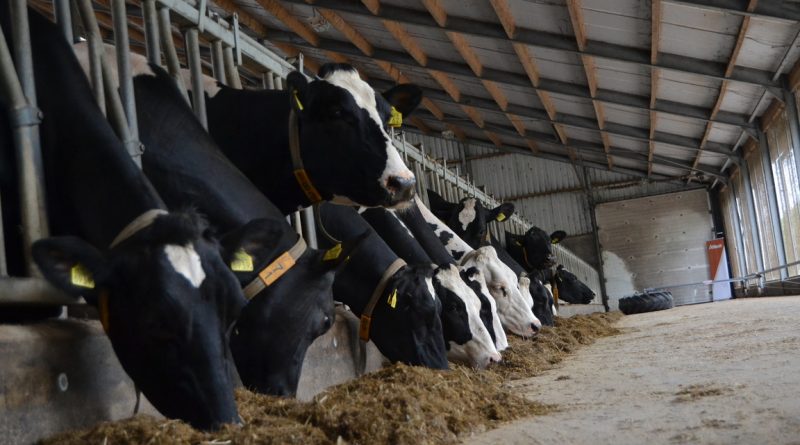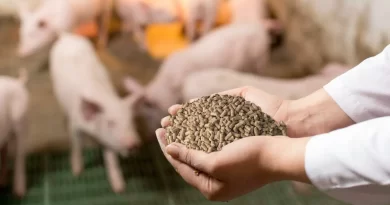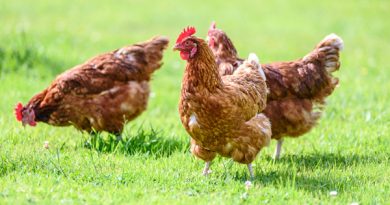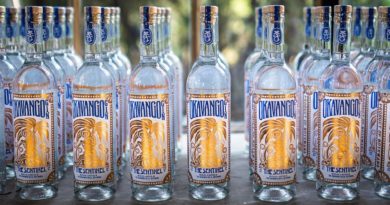Dairy Farmer Profits from use of Technology and Innovation
Dairy is part and parcel of the Dutch culture. On average, the Dutch drink two glasses of milk a day. A recent report from the country states that, of the world’s five largest companies in the global dairy industry, one is Dutch, FrieslandCampina. The company is basically a cooperative made up of 19,000 member dairy farms found in the Netherlands and abroad.
Apart from Wageningen University and Research Centre, a global leader in dairy expertise where around 350 researchers work in state-of-the-art labs with the latest equipment at any given time, two of the world’s big five dairy companies, Namely, Danone and Nestlé, have research and production locations based in the Netherlands.
Holland is truly a dairy country. It is home to 18,000 dairy farms with over 1.6 million cows that produces 12.7 billion kilos of milk each year. The Netherlands accounts for about 8% of milk consumed in the European Union, fifth after Germany, the United Kingdom, France and Poland.
At the end of last year, the dairy industry in Netherlands was made up of 25 companies with a total of 53 production sites, and Five of those companies were cooperatives, processing milk in 27 factories.
The Toon den Boer’s family farm, located near Dongen, in Netherlands, is one of the many dairy farms found in the country. The 40 hectare farm has about 150 dairy cows and Toon took over the running of the dairy farm from his father in 1995.
Breeding
When Toon took over, the family business was milking about 80 cows and he started planning for the future. Toon, whose son, Ron, is planning to take over when his father retires, started by building a new 200 cow capacity state of the art, fully automated dairy barn.
Dairy cows must calf every year if a farmer is to realise sustainable return on investment on his farm. This allows them to produce milk. Everything is Artificial Insemination.
Toon explains that they use sex semen on the heifers. After that they then use conventional semen. About 80% of their cows are mated with a beef bull, and they also use AI with conventional semen on the top 20% of their herd.
den Boer says that in order to work around the phosphates rights limitations, they keep a small number of young cows on the farm. “The goal is to keep as many old cows as possible as they are more efficient when it comes to milk production.” He elaborates. The average age of the old cows on the farm is 5 years, and by the time they reach this age, they would have calved about 4-5 times.
The dry cows are grouped together on one side of the old barn. on the other side is the maternity ward where only pregnant cows stay. There is a paddock where they give birth and then they are moved to the maternity ward for a few day before moving to the main barn for milking.
“The calves stay in the farm for two weeks. Only females will remain behind in the farm while male calves will be sold to veal farmers. ” Explain Toon
Milking Robots
When it comes to milking, den Boer’s 150 dairy cows have everything under control. They get milked at their prerogative. Whether it is at night or during the day, they can get milked whenever they want. That’s because Toon has installed three milking robots on his farm. The use of milking robots, also referred to as Automatic milking system (AMS), is a new trend of farm management practices whereby the milking decisions are transferred from the farmer to the robots and the cows.
Unlike the conventional milking system, using milking robots system provides flexibility of milking times and frequency while freeing up more time that the farmer can use to do other on the farm activities. Just like with most technological products, The primary disadvantage of automated milking systems is the initial capital outlay. It costs anything from of €90,000 to €150,000 per robot .
While about 80% of farms in the Netherlands graze their cows outside, at Toon’s farm the cows don’t go outside. they stay inside year-round. They get grass and corn silage which is grown on the farm. Part of the feed is compound feed as well as pellets which are placed at the milking machines as treats for the cows.
Toon believes that keeping cattle inside results in high milk production as they get the right feed at the right time unlike if they spend time out in the pasture. This also frees the land so that they can grow silage.
The effectiveness of AMS depends on the willingness and ability of cattle to go to the milking bays on their own. The robots use sensors, lasers, and artificial intelligence to determine which cow is in the bay.
Basically when a cow enters one of the three milking bays, a robot scans an identification chip found on a belt tied around the cow’s necks. Based on the number, the machines remembers exactly how the udder and teats of the cow look like from an initial scanning. The machines also confirms when the cow was last milked, the quantity and quality of milk.
If the cow has been milked recently, the system opens the gate and sends it back. If not, a robotic arm with a brush extends to clean and sanitize the teats while stimulating them to enable the cow to relax and let her “release” milk.
Toon checks the computer twice a day, in the morning and in the evening. This way he identifies animals that haven’t been milked. Those haven’t been milked for over 12hrs, are manually drive to the milking robots.
“Cows should be milked roughly 3 times a day.” He says
On average he gets about 31kg of milk per cow per day. The cattle are divided into two groups. One group is made up of pregnant cows which are less productive and the other group consists of cows which are not pregnant and are highly productive when it comes to milk.
For cows which have calved for the first time and don’t know anything about robots, the Toon uses pellets to stimulate movement to the robots. “It is a kind of a reward or a treat. As time goes on, the cows also go there on their own to “get rid” of the pressure on their udders.” He explains
The high milk producers go to the milking robots more often. It is the ones that don’t produce more milk that have to be coaxed to go to the milking bays. Most of them are about to be moved to the dry barn and they get less pellets consequently producing less milk which results in less pressure in their udders.
“It is also important that the cows fertility is very good, it’s calving interval is low because then you have less animals with less milk production at the end of lactation therefore you get better results in the amount of “milkings” per cow per day. ” Toon elaborates
By milking each teat individually, the system enable farmers to assess production and the quality of milk teat by teat. ” Since we started milking with robots we get less Mastitis cases because cows get milked more and you get less milk in the udder.” Says Toon. He goes on to explain that the system allows him to detect and treat diseases better than he did under the conventional method.
Feed
Feed is a very important factor when it comes to dairy production. A dairy cow has to eat a balanced diet rich in vital minerals and vitamins in order to produce top quality milk. Part of feed for Toon’s cows include grass silage with a protein level of 16%, Dry matter is 40%, NDF is 464 grams. “For energy levels we use 900 VEM per kilogram of dry matter.” Says Toon.
Corn silage will, on average, contains about 40% dry matter, starch level will also be roughly 40% amongst other minerals valuations. Toon goes on to explain that, apart from the need to know the nutritional quality of the feed they give their cows, they also have to know how much goes into the feed due to manure regulations. Toon has been working with Alltech for technical assistance on minerals, diet formulation and managing the farm since 2017. and ever since he started working with Alltech, he has seen tremendous improvement in milk production on the farm.
“You must get your grass tested after harvest. You have to analyse it’s nutritional value, only then can you make a good effective diet for your cows.” Toon elaborates.
He says that they grow feed on their own farm, grass is grown on 30 hectares while corn takes up 10 hectares. He explains that the grass silage that they are currently feeding their cattle was cut last year in October. “Our land gives us up to 18 tons per hectare of corn silage while for grass it’s roughly 14 tons per hectare, so we are getting good yields from our soil.” Says DeBoer. Whenever they don’t have enough corn silage, they will buy up to 5 hectare worth of corn from other farmers and the price normally depends on the quality of the corn per percentage of dry matter. It costs roughly €1.60 – €1.80 per percent of dry matter.
The situation is different for grass. Under normal circumstances, there is too much grass in the Netherlands and it will be so cheap one can even get it for free from fellow farmers. The DeBoers and most farmers normally cut grass every four to five weeks on their farms. Some farmers will even have storage of grass silage for up to three years. However, this year it was a different story as they are experiencing an unusually hotter climatic conditions than the previous years. “It hadn’t rain for 4-6 weeks so it is very dry at the moment, unlike the past two seasons where we had good grass.” He says. DeBoer is worried that if it continues like this they might end up depleting their winter reserves before time.
Challenges
When the Dutch authorities informed famers of the expected abolition of milk quotas that was coming back in 2015, the industry went into overdrive. farmers invested heavily in their operations, constructing, modernizing and expanding the old barns while other stakeholders such as processors expanded or built new factories in anticipation of the open dairy market. It is estimated that between 2013 and 2015, the industry as a whole invested roughly €2 billion.
This created another huge problem. Oversupply of manure. This rapid growth contributed to the nation exceeding the EU set phosphate threshold in 2015. As a result the government came up with a phosphate reduction plan. The plan gave farmers incentives to reduce cow numbers and cut milk production while those panelising those that went over the limit based on the amount of manure they produce.
“The phosphate rights cost about €10 000 per cow. It also depends on the production of phosphates on the farm, the higher the phosphates, the more rights you need.” He elaborates further.
Before quotas were scrapped, the farm had 150 cows and another 150 as young stock. But with the introduction of phosphate rights he got rid of all the cows he wasn’t milking as they would have required him to have phosphates rights for them too.
The Future
” The target is to increase our cows to 200, we have built a new barn but now it is underutilized because we don’t have enough phosphate rights to stock them.” says Toon,
He plans to approach the banks to finance the amount of phosphate rights he needs, but he will financing part of the cost from his own savings. It is possible to get the loan if you are getting good technical results with up to date records that you can present to the financiers



